Abstract
Glycerol-3-phosphate dehydrogenase (EC 1.1.1.8) is induced when glial cells are exposed to hydrocortisone in vitro. In contrast, the enzyme activity in fibroblasts is not affected by the steroid. In an attempt to elucidate the mechanisms controlling inducibility, hybrids between glial cells and fibroblasts were studied. It was found that the activity of the enzyme does not increase when the hybrids are exposed to hydrocortisone. It was also shown that inducibility and the noninduced activity of enzyme are controlled independently. Comparisons of S-100 and glycerol phosphate dehydrogenase activity in the hybrids suggest that all the specialized functions characteristics of glial cells are not coordinately controlled.
Full text
PDF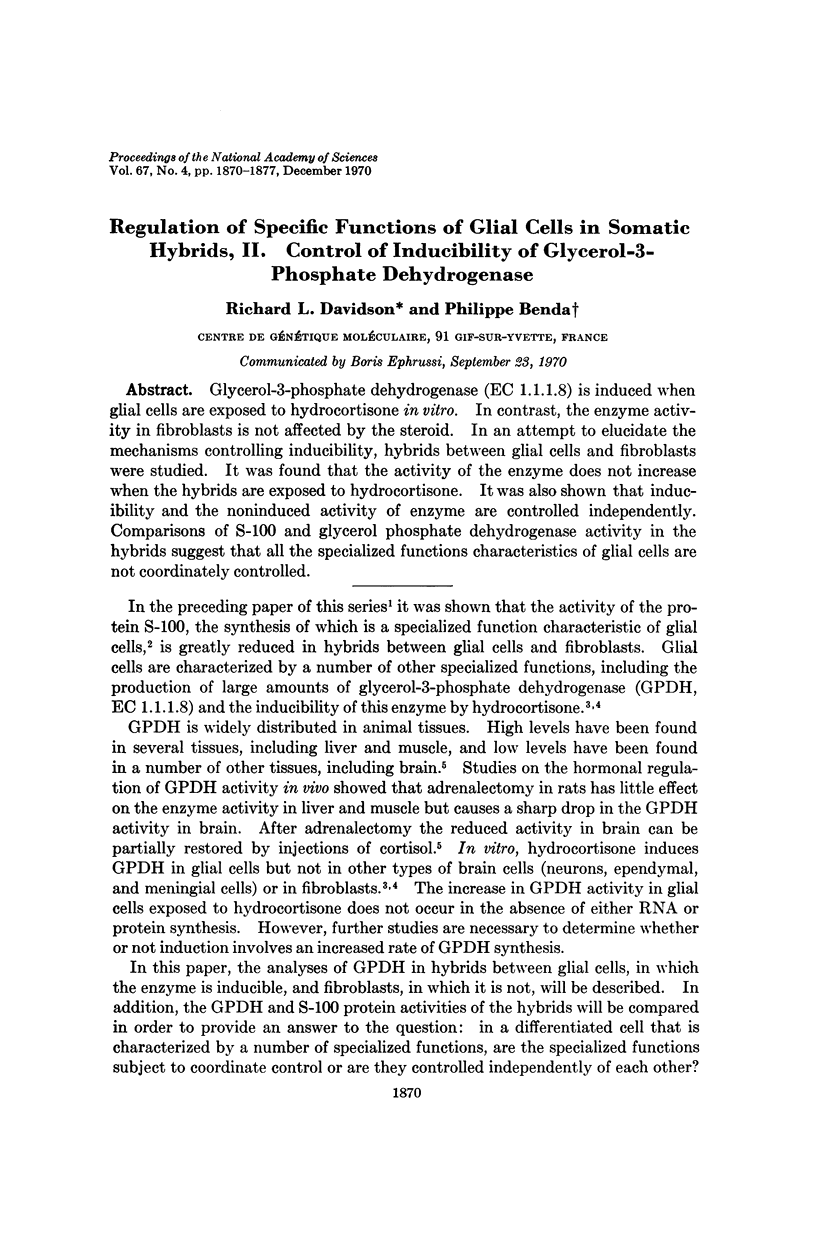
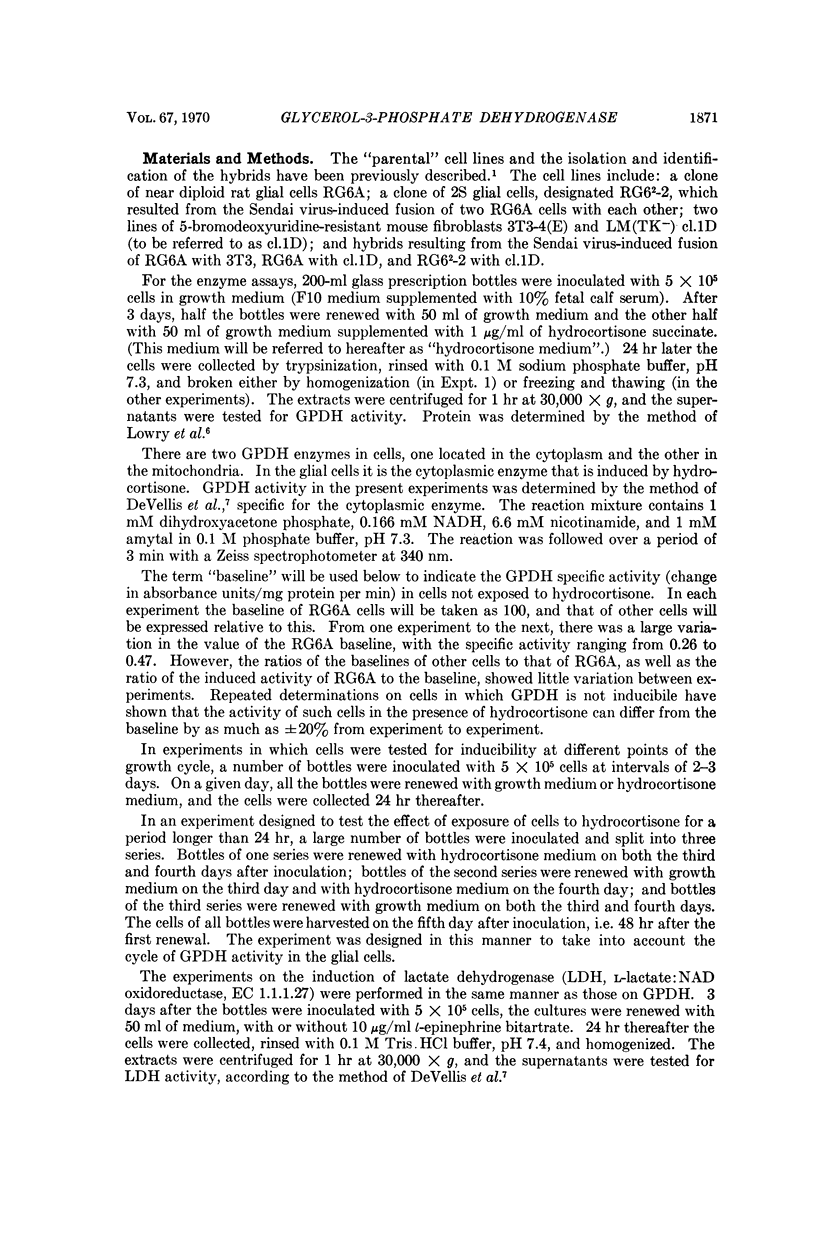
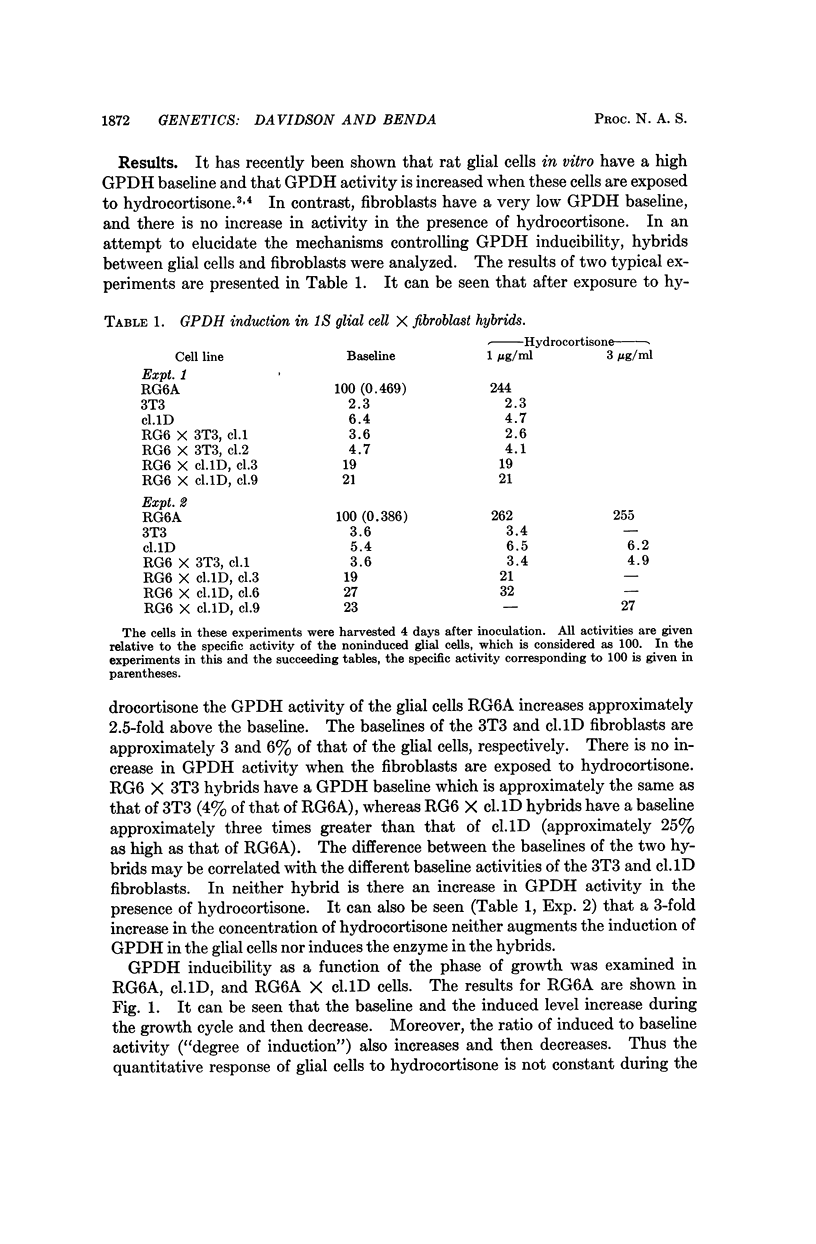
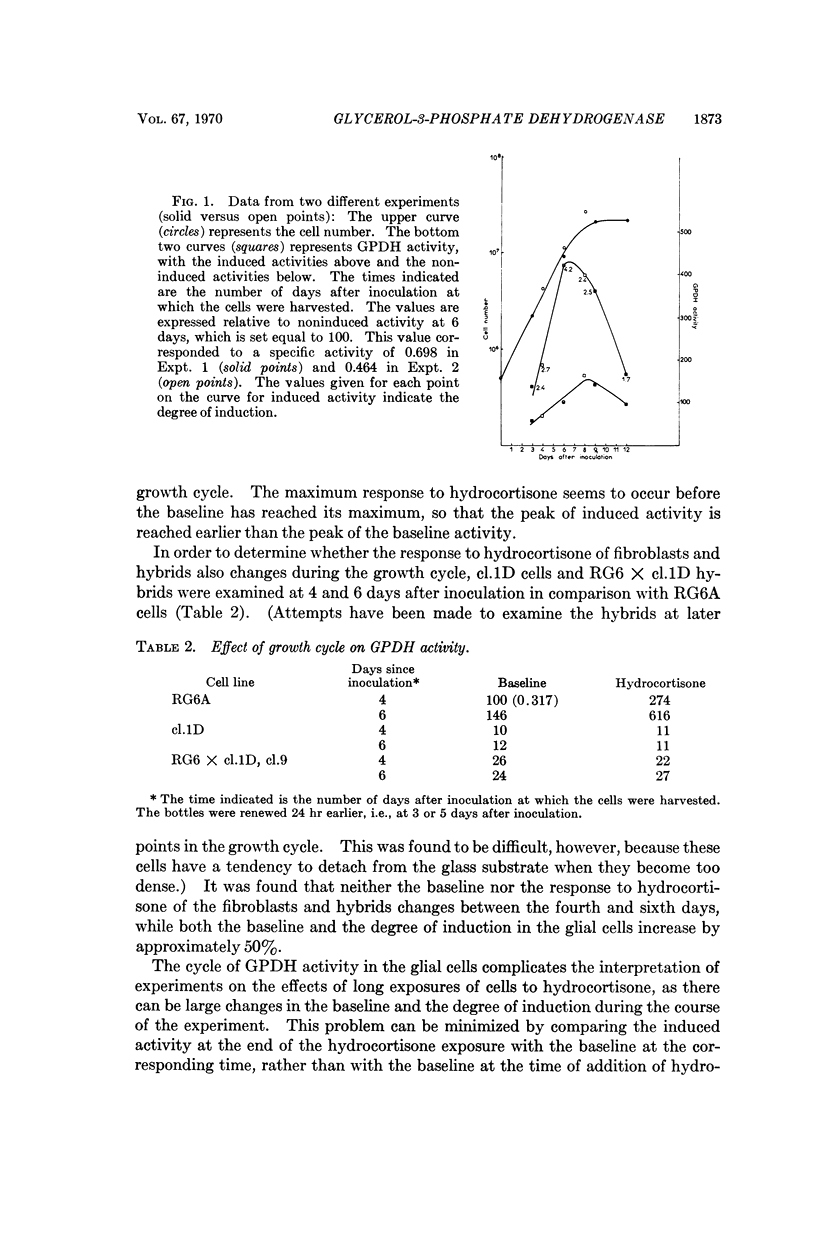
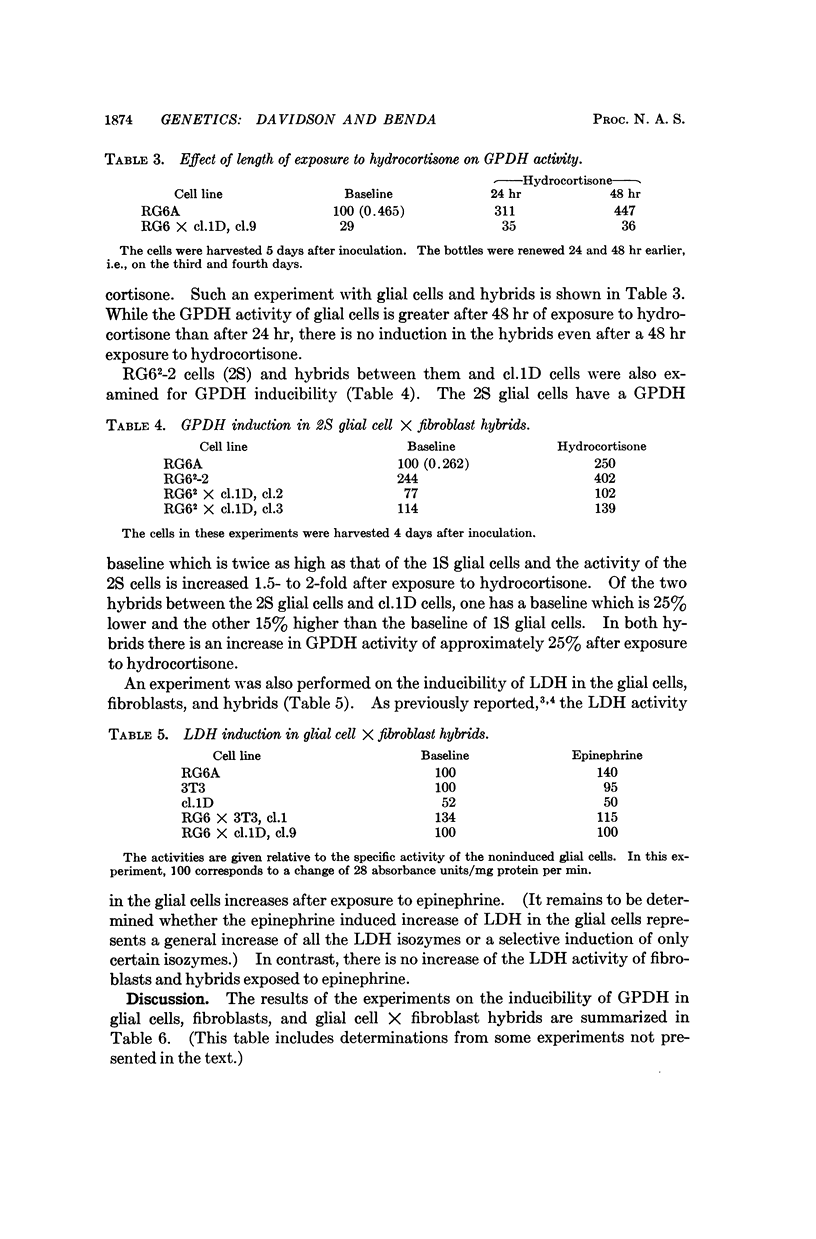
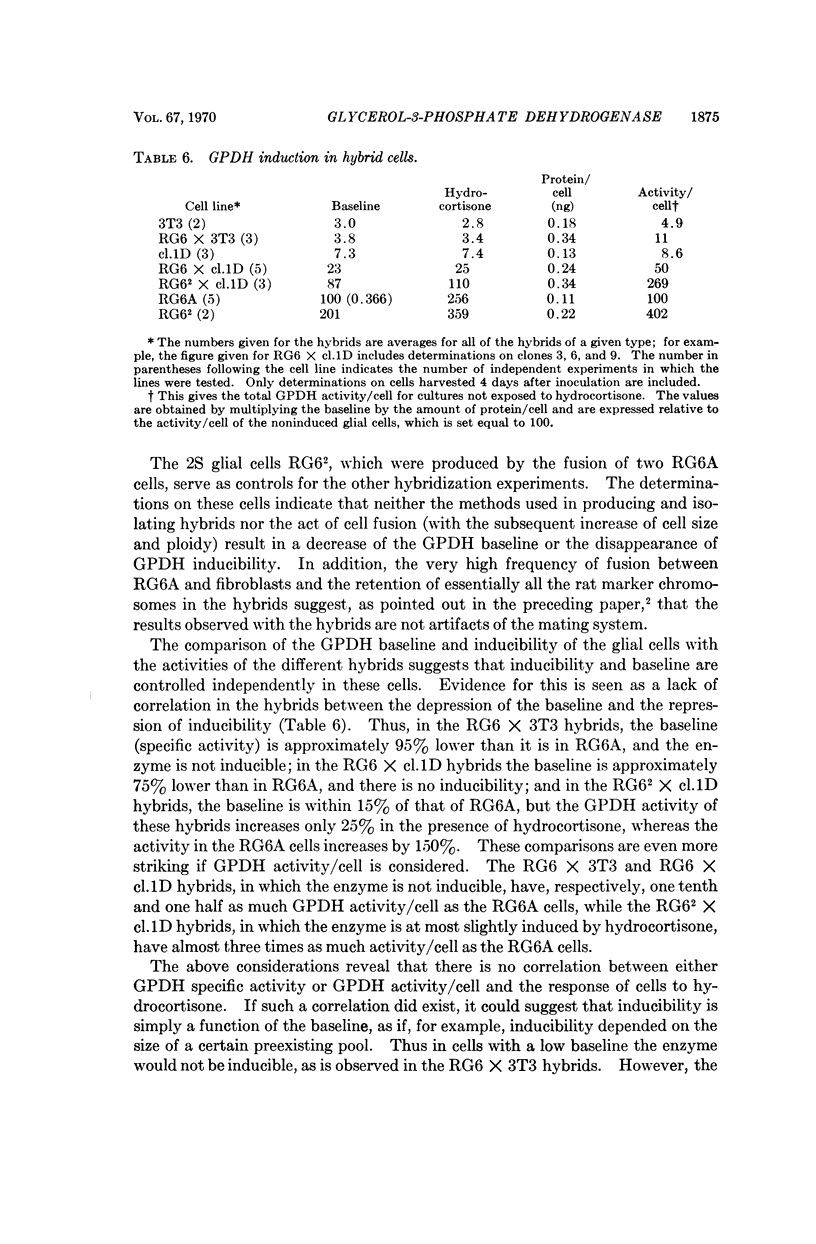
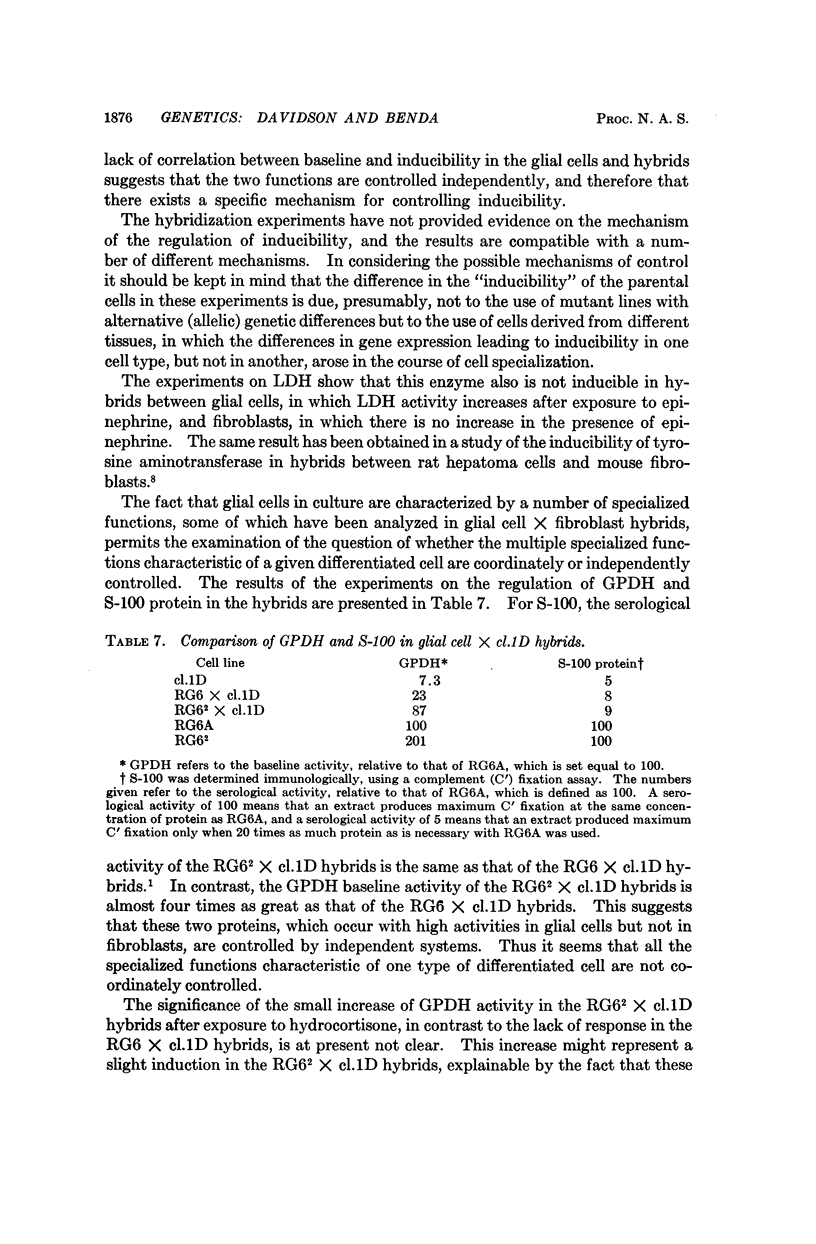
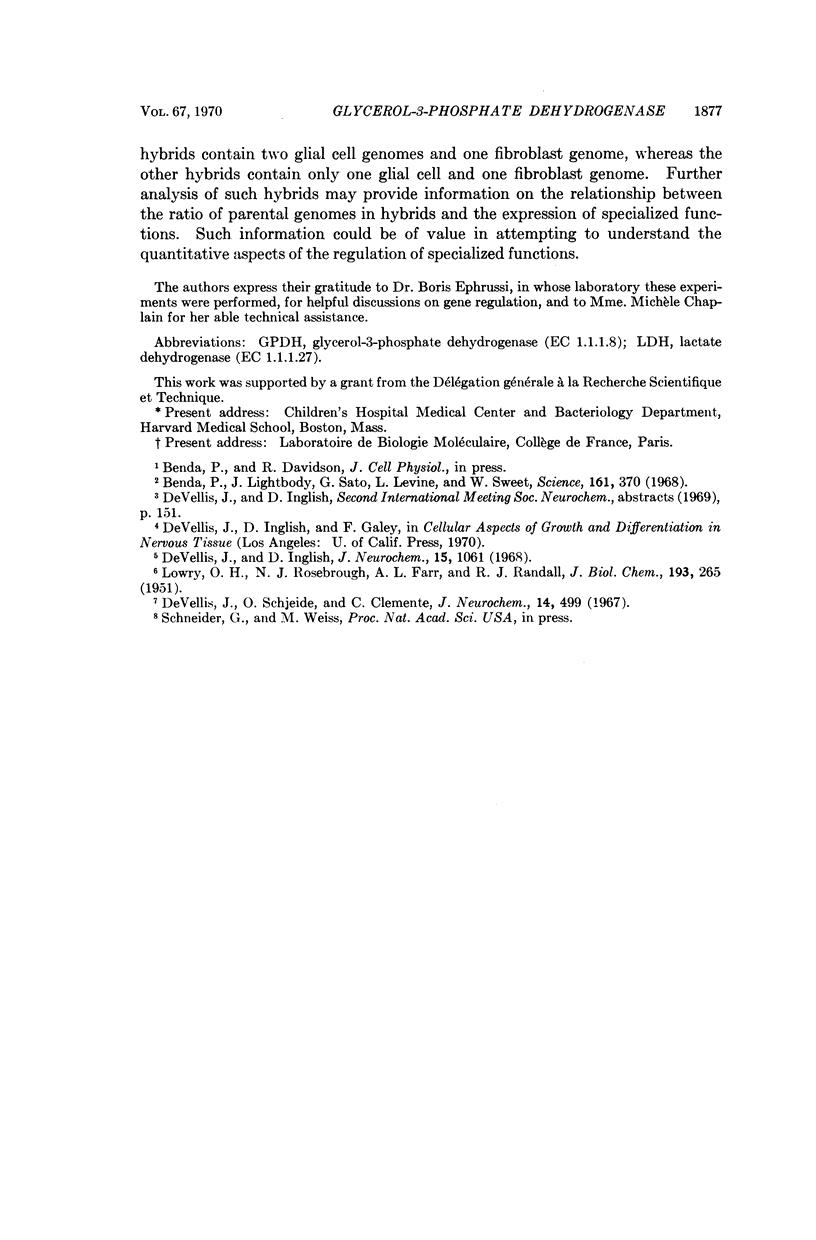
Selected References
These references are in PubMed. This may not be the complete list of references from this article.
- Benda P., Lightbody J., Sato G., Levine L., Sweet W. Differentiated rat glial cell strain in tissue culture. Science. 1968 Jul 26;161(3839):370–371. doi: 10.1126/science.161.3839.370. [DOI] [PubMed] [Google Scholar]
- De Vellis J., Inglish D. Hormonal control of glycerolphosphate dehydrogenase in the rat brain. J Neurochem. 1968 Oct;15(10):1061–1070. doi: 10.1111/j.1471-4159.1968.tb06824.x. [DOI] [PubMed] [Google Scholar]
- De Vellis J., Schjeide O. A., Clemente C. D. Protein synthesis and enzymic patterns in the developing brain following head x-irradiation of newborn rats. J Neurochem. 1967 May;14(5):499–511. doi: 10.1111/j.1471-4159.1967.tb09549.x. [DOI] [PubMed] [Google Scholar]
- LOWRY O. H., ROSEBROUGH N. J., FARR A. L., RANDALL R. J. Protein measurement with the Folin phenol reagent. J Biol Chem. 1951 Nov;193(1):265–275. [PubMed] [Google Scholar]


